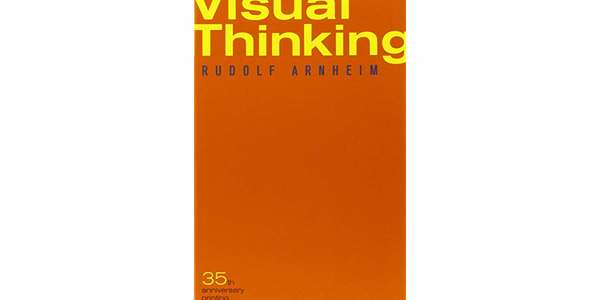Visual Thinking

A Plea for Visual Thinking - Rudolf Arnheim (1980)
"Perception and thinking are treated by textbooks of psychology in separate chapters. The senses are said to gather information about the outer world; thinking is said to process that information. Thinking emerges from this approach as the "higher," more respectable function, to which consequently education assigns most of the school hours and most of the credit. The exercise of the senses is a mere recreation, relegated to spare time. It is left to the playful practice of the arts and music and is readily dispensed with when a tight budget calls for economy. The habit of separating the intuitive from the abstractive functions, as they were called in the Middle Ages, goes far back in our tradition. Descartes, in the sixth Meditation, defined man as "a thing that thinks," to which reasoning came naturally; whereas imagining, the activity of the senses, required a special effort and was in no way necessary to the human nature or essence. The passive ability to receive images of sensory things, said Descartes, would be useless if there did not exist in the mind a further and higher active faculty capable of shaping these images and of correcting the errors that derive from sensory experience. A century later Leibniz spoke of two levels of clear cognition. Reasoning was cognition of the higher degree: it was distinct, that is, it could analyze things into their components. Sensory experience, on the other hand, was cognition of the lower order: it also could be clear but it was confused, in the original Latin sense of the term; that is, all elements fused and mingled together in an indivisible whole. Thus artists, who rely on this inferior faculty, are good judges of works of art but when asked what is wrong with a particular piece that displeases them can only reply that it lacks nescio quid, a certain "I don't know what."
[...] We assert not only that perceptual problems can be solved by perceptual operations but that productive thinking solves any kind of problem in the perceptual realm because there exists no other arena in which true thinking can take place. [...] Everything we are learning about the mental functioning of scientists and artists strengthens the conviction that the intimate interaction between intuitive and intellectual functioning accounts for the best results in both fields. And the same is true for the average schoolchild and student."